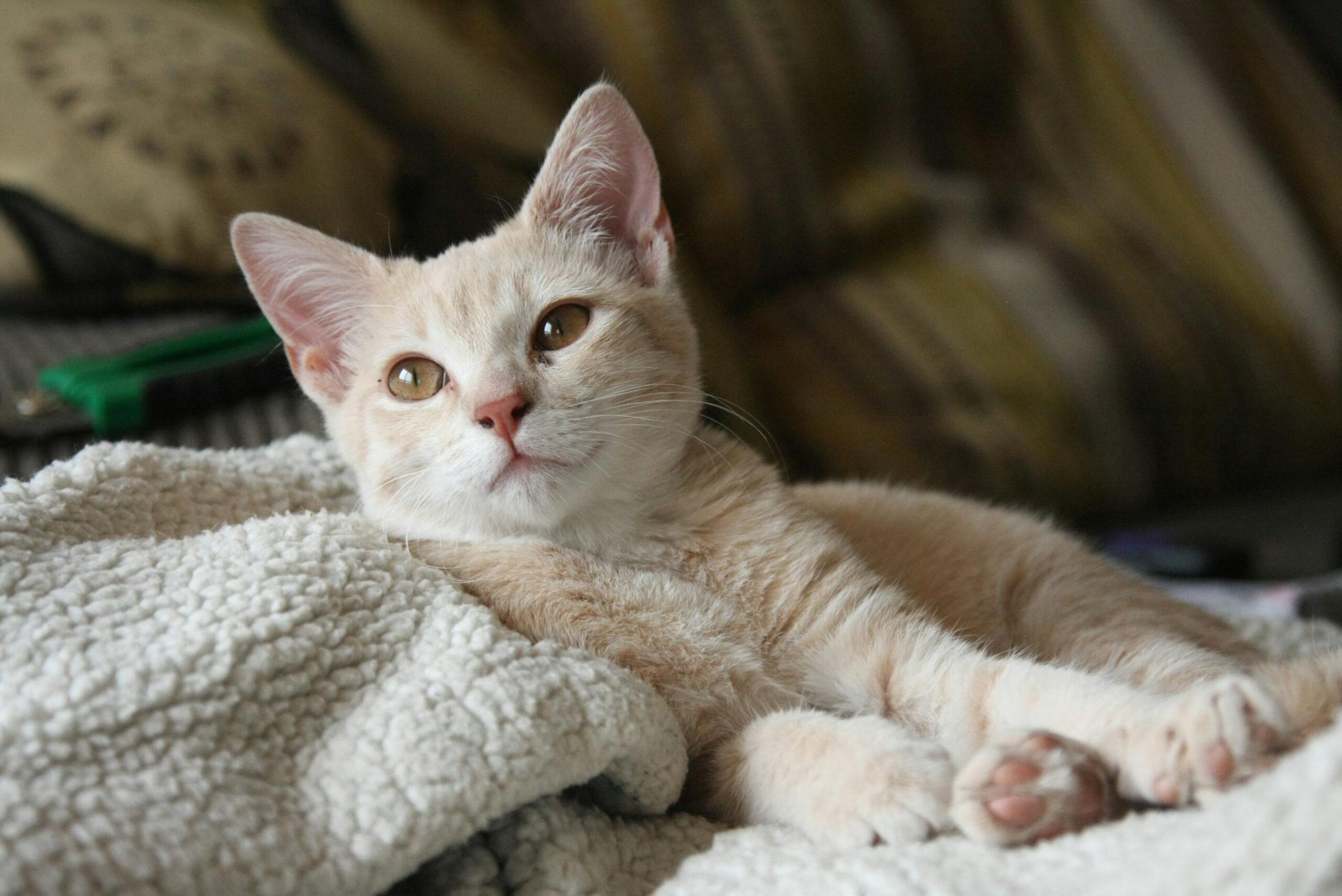How To Toilet Train A Kitten ?

How To Toilet Train A Kitten? Master Kitten Litter Box Training with our expert guide! Litter box training for kittens made easy. Save time & frustration – get a clean home now!
How To Toilet Train A Kitten: A Comprehensive Guide
Bringing a new kitten into your home is an exciting time, filled with playful antics and adorable purrs. However, one of the first hurdles you’ll face is kitten litter box training. Successfully teaching your kitten where to eliminate is crucial for a harmonious home life and your kitten’s health. This comprehensive guide on how to toilet train a kitten will walk you through every step, ensuring a smooth and stress-free process. We’ll cover everything from choosing the right litter box to dealing with common accidents and troubleshooting issues.
Choosing the Right Litter Box and Litter
The foundation of successful litter box training for kittens lies in providing the right equipment. A poorly chosen litter box or inappropriate litter can lead to accidents and frustration for both you and your furry friend.
Litter Box Size and Type
Your kitten needs a litter box that’s large enough for them to comfortably turn around and eliminate without feeling cramped. A box that’s too small can discourage its use. For kittens, a low-sided box is often best, making it easy for them to access. As they grow, you might need to upgrade to a larger one. Consider the material too; plastic is common and easy to clean, but some cats prefer a more enclosed option for privacy. Avoid boxes with high sides, especially for tiny kittens.
Choosing the Right Litter
The type of litter you use plays a significant role in kitten litter box training success. Kittens have sensitive noses and paws, so avoid strongly scented litters, as these can be off-putting. Clay-based litters are popular and absorbent, but clumping litters make cleanup easier. Consider non-clumping litters if you have a kitten that has a tendency to ingest litter. Experiment to find a litter your kitten prefers; they might show a preference through their behavior and willingness to use the box. Always ensure the litter is fresh and clean. You can even try different types of litter until you find the one that works for your kitten.
Litter Box Placement
The location of the litter box is crucial. You should place it in a quiet, easily accessible area, away from food and water bowls. Kittens naturally avoid eliminating near their food. Also, make sure the box is not in a high-traffic area or somewhere that may cause your kitten undue stress or scare them, such as near loud appliances. Consider several locations until you find one that your kitten prefers.
Introducing Your Kitten to the Litter Box
The initial introduction should be positive and stress-free. Gently place your kitten in the litter box after meals or playtime – these are natural times when they’ll need to eliminate. Scratching the litter with your kitten’s paws can help them understand its purpose. Don’t force the issue; patience is essential when it comes to how to toilet train a kitten.
Positive Reinforcement
Reward your kitten immediately and enthusiastically with praise, treats, and gentle petting every time they use the litter box correctly. Positive reinforcement is key to associating the box with positive experiences. Avoid punishment if they have an accident – it only leads to fear and anxiety, hindering the training process. Remember that positive reinforcement is the best method for **litter box training for kittens**.
Supervision and Observation
Closely monitor your kitten, especially during their initial days in your home. Observe their body language; signs like squatting, circling, or restlessness indicate their need to eliminate. Quickly guide them to their litter box at the first sign. This proactive approach will help them learn to associate the litter box with their natural urges.
Dealing with Accidents
Accidents happen. The key is to clean them up thoroughly and efficiently. Use an enzymatic cleaner specifically designed to remove pet stains and odors. Regular household cleaners might not eliminate the scent entirely, causing your kitten to re-offend in the same spot. If you’re not using an enzymatic cleaner, you might be prolonging the process of How To Toilet Train A Kitten.
Preventing Future Accidents
To prevent future accidents, assess the cause. Is the litter box too dirty, inconveniently located, or is your kitten experiencing a medical issue? Addressing these underlying reasons is crucial to avoid ongoing problems. Regularly cleaning and scooping the litter box is vital – most experts recommend scooping at least once a day.
Troubleshooting Common Litter Box Issues
Even with careful planning and training, you might encounter some issues. Let’s look at some common problems and how to resolve them:
Spraying or Urinating Outside the Box
Urinating outside the box can sometimes stem from stress, medical conditions (like urinary tract infections), or even a dislike for the litter box itself. A vet check is recommended to rule out medical issues. Consider switching to a different type of litter or providing additional litter boxes in different locations to accommodate the behavior of your kitten. Sometimes, cats will also start spraying urine if they feel insecure. The ASPCA offers some excellent resources on feline behaviour.
Defecating Outside the Box
This could be a sign of discomfort in the litter box, a medical issue, or simply a preference for a different location. Check the cleanliness of the litter box, the type of litter used, and its location. A veterinary check-up can help rule out parasites or other gastrointestinal problems. You may need to try a different type of litter to find one your kitten prefers.
Not Using the Litter Box at All
If your kitten is completely refusing the litter box, consult your veterinarian immediately. This can indicate a serious medical issue that needs immediate attention. A vet visit should be your first course of action if your kitten suddenly shows a marked change in their litter habits.
Litter Box Training for Multi-Cat Households
Multi-cat households require a slightly different approach to kitten litter box training. The general rule is one litter box per cat, plus one extra. So, if you have two cats, you need three litter boxes. This ensures that there’s enough space for each cat to comfortably use the facilities without feeling crowded or competitive.
The Importance of Patience and Consistency
Litter box training for kittens requires patience and consistency. It’s a process that takes time and understanding. Avoid punishing your kitten for accidents; instead, focus on positive reinforcement. Celebrate their successes, and consistently clean any accidents thoroughly. By being patient and persistent, you’ll eventually help your kitten understand and master their litter box duties. Keep in mind that every kitten learns at their own pace. If you start to feel overwhelmed, seeking advice from a professional feline behaviorist is advisable.
Long-Term Litter Box Maintenance
Once your kitten is successfully trained, maintaining the litter box is vital to prevent future issues. Scoop daily, or even twice a day, to keep the box fresh and clean. Replace the litter entirely at least once a week or more often as needed. Regularly clean the litter box itself, using a disinfectant suitable for pets, such as pet-friendly bleach. Vets Now provides helpful information on potential litter box problems.
Remember that maintaining a clean and appealing litter box environment is a significant factor in long-term litter box success. Regular cleaning, fresh litter, and proper location are crucial.
Addressing Underlying Medical Conditions
Sometimes, litter box issues stem from underlying medical problems. If your kitten suddenly starts having problems with litter box training, or if it persists despite your efforts, schedule a veterinary appointment. Medical conditions affecting the urinary tract, gastrointestinal system, or even neurological issues can manifest as litter box problems. Early intervention is key, as many conditions are easily treatable if caught promptly. The Pet Education website offers articles on many cat health issues.
Conclusion
Successfully teaching your kitten to use the litter box is a rewarding experience. By following these steps and remaining patient and consistent, you can ensure a happy, healthy, and clean home environment for both you and your new feline companion. Remember that every kitten is unique and might require slightly different approaches. Don’t hesitate to seek professional guidance if you encounter persistent challenges.
Share Your Experiences!
We’d love to hear about your experiences with how to toilet train a kitten, kitten litter box training, and litter box training for kittens. Share your tips, tricks, and any challenges you faced in the comments below. Let’s build a supportive community to help fellow cat lovers navigate this important stage of kitten ownership!

10 FAQs: How To Toilet Train A Kitten
1. Q: My kitten keeps peeing outside the litter box. What should I do?
A: This is a common problem in Kitten Litter Box Training. First, rule out medical issues – take your kitten to the vet. If it’s behavioral, ensure you have enough litter boxes (one per cat + one extra), they’re clean, the litter is the right type (some kittens prefer certain textures), and the location is quiet and accessible. Thoroughly clean any accidents with an enzymatic cleaner to remove the scent. Positive reinforcement (treats and praise) when they use the box correctly is crucial for How To Toilet Train A Kitten.
2. Q: What’s the best age to start Litter Box Training for Kittens?
A: Most kittens can begin How To Toilet Train A Kitten around 4-6 weeks old, coinciding with weaning. However, very young kittens may need more frequent supervision and assistance. It’s a gradual process requiring patience.
3. Q: What type of litter is best for kittens?
A: Avoid scented litters, clumping clays that can cause intestinal blockage if ingested, and cedar or pine shavings which are toxic. Many kittens prefer unscented, non-clumping clay litter, but experiment to find what your kitten prefers. Paper-based litters are also a good option.
4. Q: How many litter boxes do I need?
A: A good rule of thumb is one litter box per cat, plus one extra. Multiple boxes allow for options and prevent territorial issues, especially important in Kitten Litter Box Training.
5. Q: My kitten is afraid of the litter box. How can I help?
A: Gradually introduce your kitten to the litter box. Place it in a quiet, accessible location. Avoid sudden movements or loud noises near it. You might try placing a familiar item like a toy or blanket near the box to make it more inviting. Positive reinforcement is vital in addressing fears associated with How To Toilet Train A Kitten.
6. Q: My kitten buries its poop but not its pee. Why?
A: This could be due to several factors, including litter type preference, medical issues (urinary tract infection), or stress. Consult your vet to rule out medical problems. Try changing the litter type or the location of the litter box.
7. Q: How long does Litter Box Training for Kittens typically take?
A: It varies greatly depending on the kitten’s age, temperament, and your consistency. Some kittens learn quickly, while others may take several weeks or even months. Patience and persistence are key for successful How To Toilet Train A Kitten.
8. Q: What should I do if I catch my kitten eliminating outside the box?
A: Clean up the accident thoroughly with an enzymatic cleaner. Don’t punish your kitten – this will only increase anxiety and make the training more difficult. Instead, focus on positive reinforcement when they use the litter box correctly.
9. Q: Should I use a spray bottle to deter my kitten from eliminating outside the box?
A: No. Spray bottles are aversive and can create fear and anxiety, harming your relationship with your kitten and hindering the Kitten Litter Box Training process. Positive reinforcement is much more effective.
10. Q: My kitten is spraying urine. What does this mean?
A: Spraying is a territorial behavior, usually more common in unneutered males. Neutering is often the best solution. Ensure you have enough litter boxes, and address any potential stress factors. If the spraying continues after neutering, consult your vet. Addressing this is critical for successful How To Toilet Train A Kitten.

How to Toilet Train a Kitten: Practical Tips and Health Considerations
Toilet training a kitten can be challenging, but with patience and consistency, it’s achievable. This guide offers practical tips and essential health considerations to ensure a smooth process.
Choosing the Right Litter Box
Size Matters: Select a litter box large enough for your kitten to comfortably turn around in. A cramped box can discourage use.
Location, Location, Location: Place the litter box in a quiet, accessible area, away from food and water bowls. Avoid high-traffic zones.
Litter Type: Experiment with different litters to find one your kitten prefers. Clay, clumping, and crystal litters are common choices.
Establishing a Routine
Regular Feeding Schedule: Kittens often eliminate shortly after eating and sleeping. A consistent feeding schedule helps predict elimination times.
Frequent Litter Box Visits: Take your kitten to the litter box after waking up, after meals, and after playtime. Gently place them in the box.
Positive Reinforcement: Reward your kitten with praise, treats, or playtime immediately after successful elimination in the litter box.
Addressing Accidents
Clean Thoroughly: Use an enzymatic cleaner to remove urine and fecal stains and odors completely. Residual smells can attract your kitten back to the same spot.
Avoid Punishment: Never punish your kitten for accidents. Punishment creates fear and can worsen the problem. Instead, focus on positive reinforcement.
Supervise Closely: Keep a close eye on your kitten, especially after meals and naps. Interrupt inappropriate elimination behaviors immediately and redirect them to the litter box.
Health Considerations
Urinary Tract Infections (UTIs): Frequent urination, straining to urinate, and blood in the urine are signs of a UTI. Consult your veterinarian immediately.
Constipation: Hard or infrequent stools can indicate constipation. Provide fresh water, adjust diet, or consult your veterinarian.
Parasites: Intestinal parasites can cause diarrhea and changes in elimination habits. Regular deworming is crucial.
Behavioral Issues: Stress, anxiety, and other behavioral issues can impact litter box habits. Consult your veterinarian or a certified cat behaviorist if necessary.
When to Seek Veterinary Help
Consult your veterinarian if you notice any of the following:
- Changes in urination or defecation frequency or consistency
- Straining to urinate or defecate
- Blood in urine or feces
- Vomiting or diarrhea
- Loss of appetite or weight loss
With patience, consistency, and attention to your kitten’s health, you can successfully toilet train your new furry friend.